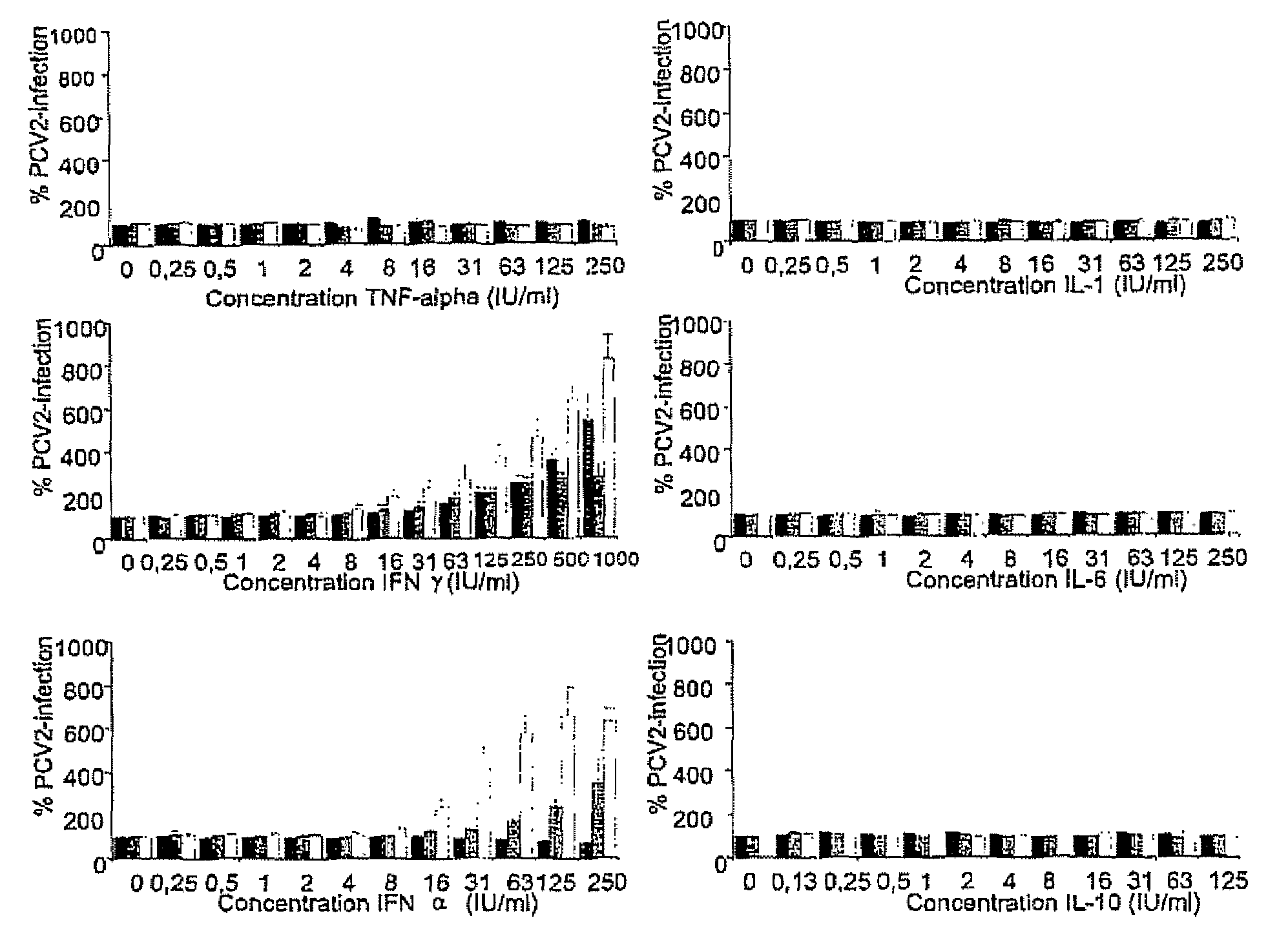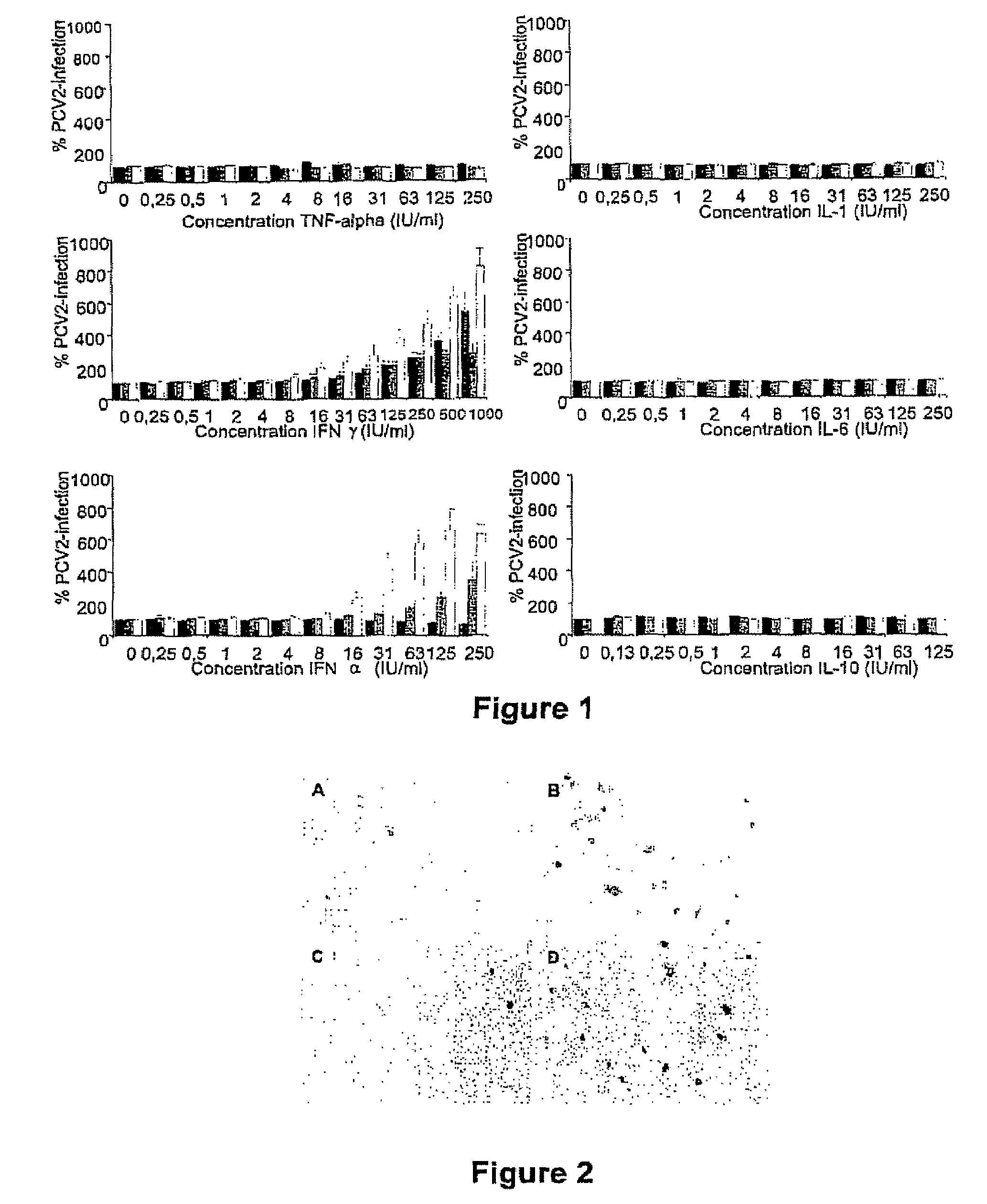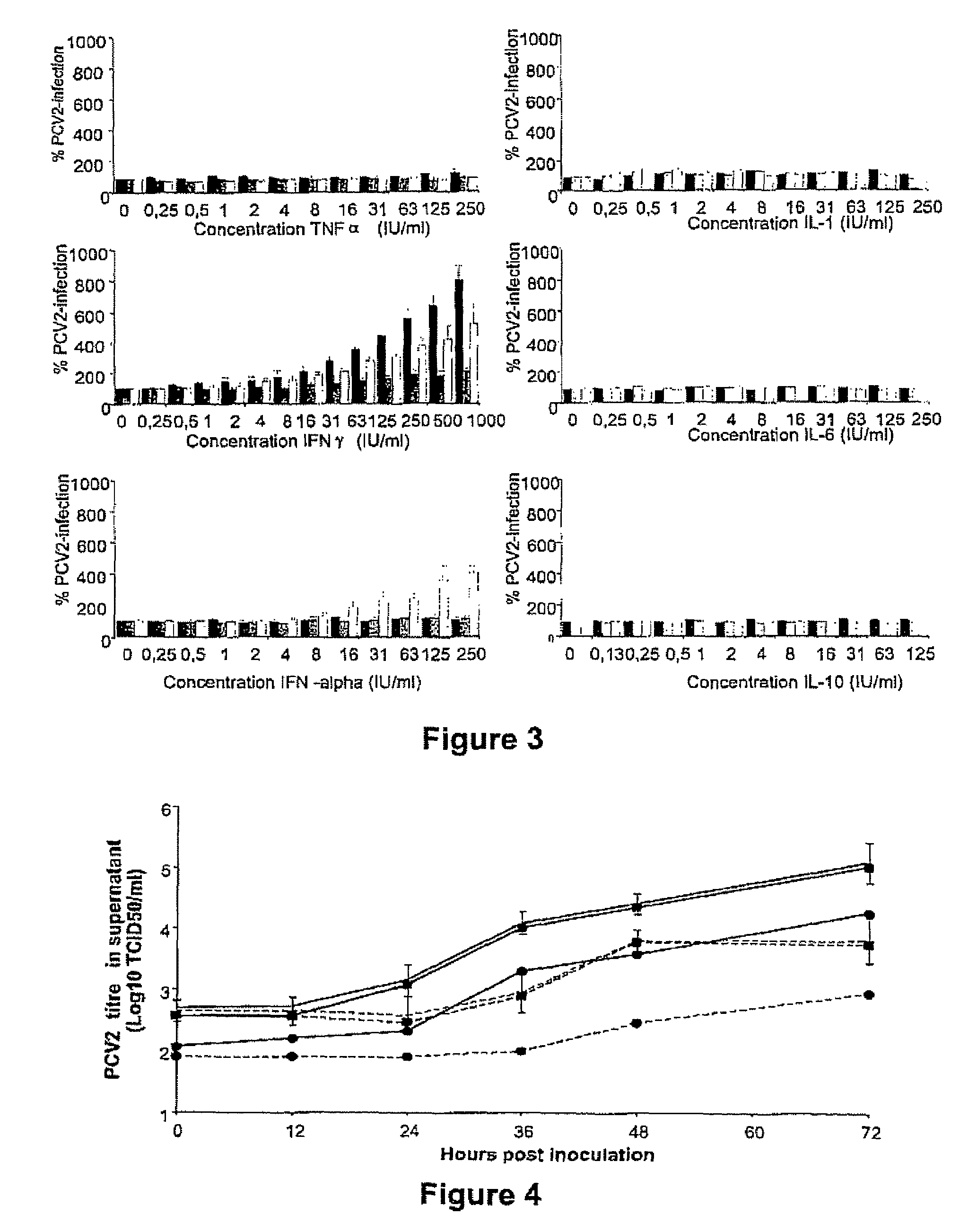Culturing circular ssDNA viruses for the production of vaccines
a technology of ssdna virus and cell culture method, which is applied in the field of cell culture methods for in vitro cultivation of viruses, can solve the problem that the administration of peg-ifn plus ribovarin cannot induce a ttv sustained response in patients infected with hepatitis c, and achieve the effect of enhancing the viral titre
- Summary
- Abstract
- Description
- Claims
- Application Information
AI Technical Summary
Benefits of technology
Problems solved by technology
Method used
Image
Examples
example 1
Influence of Cytokines on the Total Number of PCV2-Infected Cells
[0077]The influence of the cytokines on the infection of PCV2 in PK-15 and 3D4 / 31 cells was determined by adding two-fold-dilution series of the cytokines to the medium of the cells before, during or after the inoculation. IL-1, IL-6, IL-10 and IFN-alpha were used in concentrations ranging from 0.25-250 Units / ml (U / ml), IFN-gamma was used in concentrations ranging from 0.25-1000 U / ml and IL-10 was used in concentrations from 0.13-125 U / ml. Cell cultures were either pre-treated with the cytokines for 24 hours before inoculation, treated during the inoculation or the cytokines were added in the medium after the inoculation. After 36 hours of incubation at 37° C. in an environment supplemented with 5% CO2, the cells were fixed by drying and frozen at −20° C. The plates were stained with an immuno-peroxydase monolayer assay (IPMA) as described before (Sanchez et al. (2003) Vet Microbiol 95, 15-25) and the number of PCV2-po...
example 2
Influence of IFN-Gamma on the Production of PCV2
[0083]Since IFN-gamma increased the number of PCV2-positive PK-15 cells independent of the time when it was added to the medium of the cells, this cytokine was selected to investigate the effect in the production of progeny virus at a concentration of 500 U / ml.
[0084]The influence of IFN-gamma on the production of progeny virus in PCV2-infected cells was determined by inoculating PK-15 cells with the standard PCV2-stock. After the inoculation, culture medium was added supplemented with IFN-gamma (500 U / ml). At 0, 12, 24, 36, 48 and 72 hours post inoculation (hpi) the supernatant was collected. Subsequently the culture was washed once with 1 ml PBS. Both the supernatant and the washing fluid were centrifuged for 10 minutes at 15,000×g to pellet cells and debris. The centrifuged supernatant and washing fluids were combined and considered to contain the extracellular virus. Both pellets and cell cultures were freeze-thawed tree times and c...
example 3
Influence of IFN-Gamma on the Expression Kinetics of PCV2 Proteins
[0086]To determine the timing and localisation of PCV2 proteins expression (Capsid protein and REP), PK-15 cells were seeded on glass cover slips and inoculated with PCV2. After inoculation, culture medium was added with or without 500 U / ml IFN-gamma. At 0, 12, 24, 36, 48 and 72 hpi the cells were fixed in methanol at −20° C. Afterwards, a triple immunofluorescence staining was performed to visualize both viral proteins and the cell nucleus. PCV2 capsid protein was detected using purified biotinylated porcine polyclonal anti-PCV2 immunoglobulins which only react with PCV2 capsid proteins. Bound porcine immunoglobulins were visualized with streptavidin conjugated Texas Red (molecular probes, Leiden, The Netherlands). In a second step, the REP protein was detected with a specific mouse monoclonal antibody (F210) visualized with goat-anti-mouse FITC (molecular probes, Leiden, The Netherlands). In a final step, the nuclei...
PUM
| Property | Measurement | Unit |
|---|---|---|
| concentration | aaaaa | aaaaa |
| concentration | aaaaa | aaaaa |
| temperature | aaaaa | aaaaa |
Abstract
Description
Claims
Application Information
 Login to View More
Login to View More - R&D
- Intellectual Property
- Life Sciences
- Materials
- Tech Scout
- Unparalleled Data Quality
- Higher Quality Content
- 60% Fewer Hallucinations
Browse by: Latest US Patents, China's latest patents, Technical Efficacy Thesaurus, Application Domain, Technology Topic, Popular Technical Reports.
© 2025 PatSnap. All rights reserved.Legal|Privacy policy|Modern Slavery Act Transparency Statement|Sitemap|About US| Contact US: help@patsnap.com



